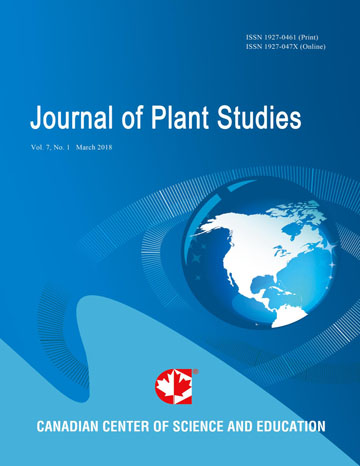Mineral Contents of Selected Pearl Millet (Pennisetum glaucum (L.) R. Br.) X Elephant Grass (Pennisetum purpureum (Schum.)) Interspecific Hybrids of Nigerian Origin
- Ekemini Obok
Abstract
A study was conducted to analyse the mineral constituents of generated F1 interspecific hybrids of Pennisetum species grown in Nigeria. Non-reciprocal crosses were made involving two elephant grass selections (pollen parents), S.13 and S.15, and five cultivated pearl millet genotypes (female parents) namely Maiwa 25-2, Maiwa 28-1, Maiwa 94-2, Dauro and male sterile Gero A. Genetic incompatibility and poor combining ability in some interspecific crosses among Pennisetum species of Nigerian origin were reported. Crosses between Gero A and the elephant grass selections gave rise to unsuccessful hybrids whereas Maiwa 25-2, Maiwa 28-1, Maiwa 94-2, and Dauro crosses resulted in successful hybrids with promising potentials of improved mineral contents. These hybrids had high phosphorus content and relatively high calcium content above the optimum requirement for dairy production. Amongst the mineral contents determined, magnesium and iron showed the highest (CV = 32.9%) and the least (CV = 11.0%) variations, respectively. The overall results revealed existing genetic potentials in Nigerian pearl millet genotypes to improve (through hybridization) elephant grass in terms of mineral richness as a complement to its high herbage yields. However, strong recommendations for rational ruminant-feeding trials using these promising interspecific hybrids point at further evaluation studies.
- Full Text:
 PDF
PDF
- DOI:10.5539/jps.v2n2p22
Index
- AGRICOLA
- CAB Abstracts
- CABI
- CAS (American Chemical Society)
- CNKI Scholar
- Elektronische Zeitschriftenbibliothek (EZB)
- Excellence in Research for Australia (ERA)
- Google Scholar
- JournalTOCs
- Mendeley
- Open policy finder
- Scilit
- Standard Periodical Directory
- Technische Informationsbibliothek (TIB)
- WorldCat
Contact
- Joan LeeEditorial Assistant
- jps@ccsenet.org
